What is a plot point, and why is it helpful to think in terms of plot points? Read on for a definition and tips for making significant events in your novel or story count:
What is a plot point?
Many writers attach strict roles and functions to plot points. Some say, for example, a first plot point is a turning point for your character or a point of no return.
The simple Oxford Dictionary definition:
'A particularly significant part of the plot of a work of fiction, especially a film or television drama.'
Thus plot points don't necessarily have a specific function. They are simply key events in your story that are important to the whole.
A character hiding a gun in their glove compartment is a plot point. A character eating breakfast is not. Unless, to use a silly example, the first mouthful transports them to an alternate universe.
As the definition makes clear, plot points are a common topic in screenwriting. Here, focusing on plot is particularly important, since in an hour-long episodic format, for example, screenwriters need to make sure something happens to keep viewers tuning in week after week. For these reasons, starting and ending with plot points that are purposeful and create momentum in story arcs is key.
Even though your book might not be released in episodic format like a Dickens novel, plot points are a useful concept. Whether your reader does the equivalent of 'binge-watching' and reads your book through the night or paces themselves depends, in part, on how badly they want to find out the next plot point.
So how do you find plot events that hook readers on your story and characters?
1. Draw intriguing plot points from your central idea
You can spin all kinds of great plot points out of a strong central story idea [complete the first step of Now Novel's dashboard to find or tweak your own].
Take, for example, Gabriel Garcia Marquez's classic novel, Love in the Time of Cholera.
You could write the novel's central idea thus:
'When Fermina Daza's husband dies, a former suitor who's loved her since courting her decades before shows up unexpectedly to pay his respects and declare his undying love.'
Given this dramatic, emotional chain of events, there are many possible plot points.
For example, the story could proceed to show:
- First major plot point: Fermina's reaction to her former suitor's reappearance and declaration of love
- Second: How her suitor Florentino acts after Fermina embraces or rejects him
- Third, fourth, fifth: Flashback scenes show the plot points explaining their current feelings towards each other
Each of these is ripe for surprise, conflict, and strong emotions. These are the ingredients that make stories compelling.
2. Find plot points showing desires, motivations and setbacks
Characters feel most believable when we understand the causes and effects driving them.
Brainstorming what your character wants and the emotions driving these desires is key to finding character-driven plot points.
For example, in a spy saga, your novel might open with a character running from a high-security facility. Perhaps they're clutching valuable stolen documents.
In this instance, information is the desire that drove your character to act. Fear (of being caught) is the emotion propelling them towards the next situation (their escape or capture).
It would make sense to brainstorm plot points that complicate your spy's situation further. They could:
- Drop a personal item mid-flight that security picks up and enables the antagonists to get on their trail
- Be caught, making what happens to them next an open question
- Discover once they reach safety key documents they need are missing
Clear character desires, motivations and setbacks help maintain a sense of purpose and direction in your story.

3. Place plot points at important structural junctures
One reason it's helpful to think in plot points is that having a summary-like overview helps you structure and keep events developing. Place plot points at key structural points (for example, the end of your first chapter) to create hooks and cliffhangers. These structural devices keep readers intrigued and entertained.
Let's return to the Marquez example. Marquez ends his first chapter, most of which focuses on Fermina's husband and establishing the book's setting, with Florentino revealing his undying love to Fermina.
On the second-last page of the chapter, we read these key lines of dialogue:
"Fermina," he said, "I have waited for this opportunity for more than half a century, to repeat to you once again my vow of eternal fidelity and everlasting love."
Placing this revelation so close to the end of the chapter (in such an inappropriate setting - the hearer's husband's funeral) naturally creates dramatic suspense.
The full first major plot point is completed by Fermina's rejection of this advance:
'Her first impulse was to curse him for profaning the house when the body of her husband was still warm in the grave. But the dignity of her fury held her back. "Get out of here," she said. "And don't show your face again for the years of life that are left to you." She opened the street door, which she had begun to close, and concluded:
"And I hope there are very few of them."'
This furious reaction shows a clear setback for Florentino. Yet Marquez ends the chapter by introducing a further note of uncertainty. It's possible Fermina is more conflicted than her first outburst lets on:
'...she slept, sobbing, without changing position on her side of the bed, until long after the roosters crowed [...]. Only then did she realize that she had slept a long time without dying, sobbing in her sleep, and that while she slept, sobbing, she had thought more about Florentino Ariza than about her dead husband.'
Marquez thus brings his first chapter to a close on a major revelation and further complication: 'What will Fermina do next?' we wonder.
4. Create points of no return
Your first plot point doesn't have to be a point of no return for your character. After all, your first major event might be a key historical event in a prologue, for example, showing the general historical situation that shapes all your character's lives (e.g. the events explaining how your characters ended up in the setting that opens your story).
Still, a plot point that shows an event there is no return from is a useful narrative device. Because it creates forward momentum.
Florentino revealing to Fermina that he's still in love with her is an example of this type of plot point. He can't 'unsay' what he's told her. It's a turning point for her too - she can't un-hear it. Their meeting at the end of chapter 1 also has a decisive outcome.
She forbids Florentino's further approach (a literal point of 'no return'), yet we know because of his determined holding out for this moment he's unlikely to give up so easily.
A strong point of no return:
- Shows a decisive situation that shapes your character's future actions: Ask yourself what choices a point of no return leaves your characters
- Has an emotional component: How does a character feel about what happens at the point of no return? Will Florentino drown his sorrows in a bar and get in a fight? Sit dejectedly in his room writing lovelorn bad poetry? Or will he pursue Fermina with even more fervour?
- May bring a change in setting, viewpoint character or time period: From the love declaration on, Marquez begins alternating time periods, giving us a glimpse into Fermina and Florentino's mutual past
5. Create and arrange summaries of each plot point
Consciously plan and structure how each plot point flows to the next. This will leave fewer irrelevant 'filler' scenes to cut when you revise.
You could create visual timelines with dates showing individual plot points and when they occur, as well as which characters they involve. For example:
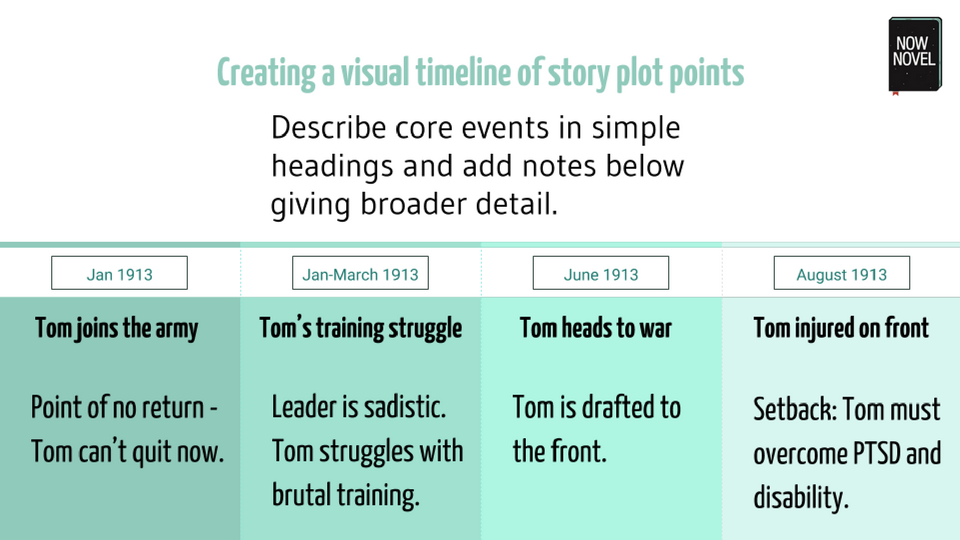
If you prefer to focus on the words and not make visual aids, use a simple tool like the Scribble Pad on Now Novel. You can name individual scribbles (brief 800-word extracts) with a short description of what happens during this particular plot point. Then add more expansive detail in the text of your extract itself. You'll build up a sequence of handy plot point summaries:
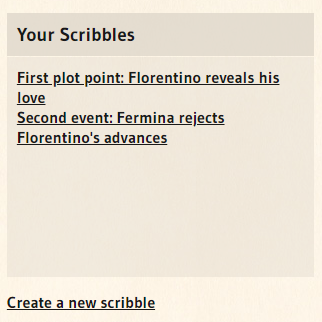
What's more, you can share these individual plot points for constructive feedback from other writers to decide which plot points work best for your central story idea.
Focusing on key events in your story that actively drive your plot and your characters' actions and decisions will help keep your story focused, lean and intriguing.
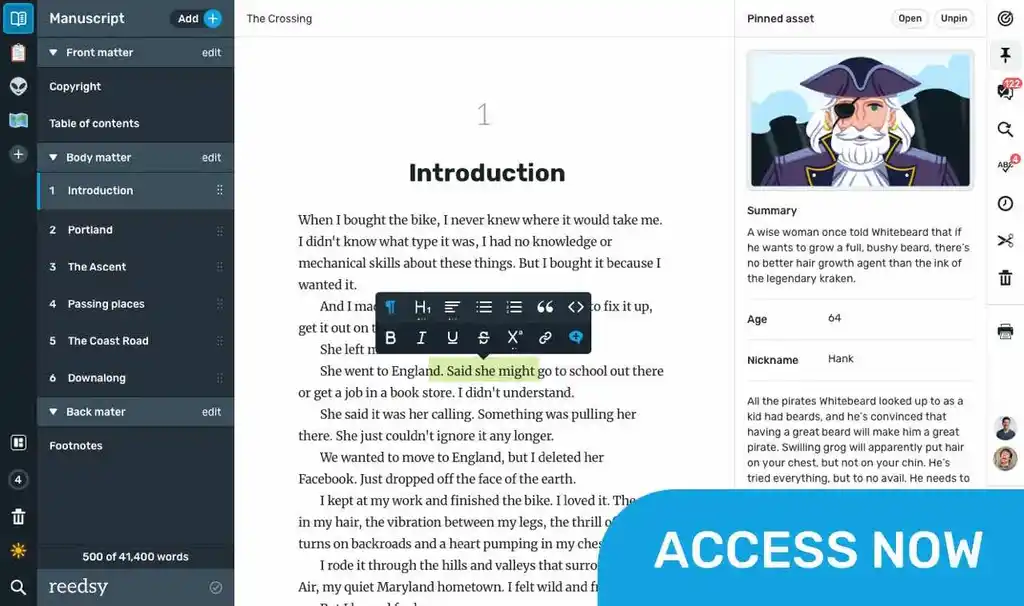
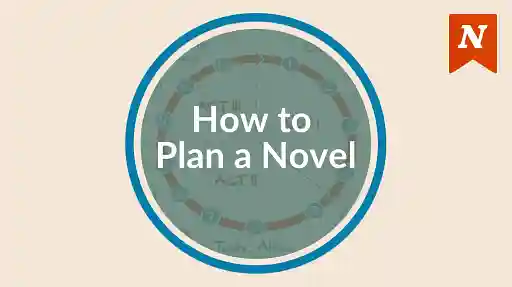
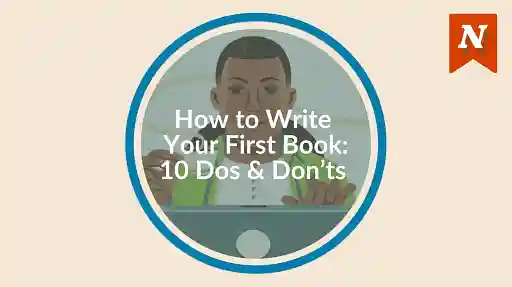
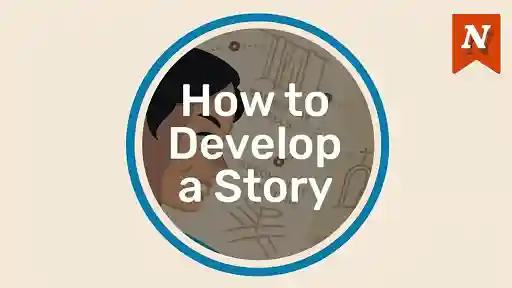
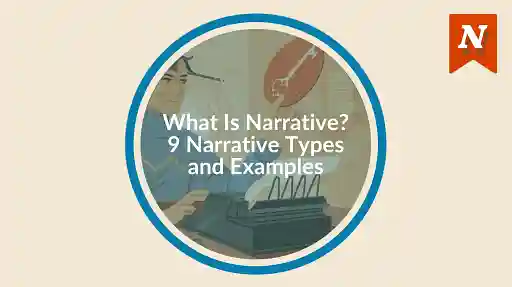
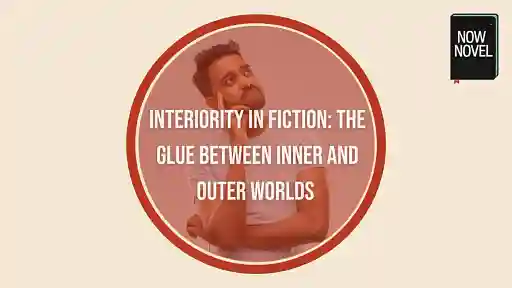
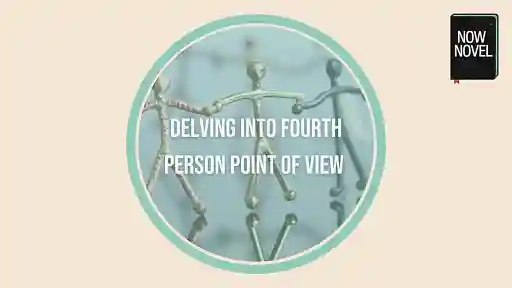

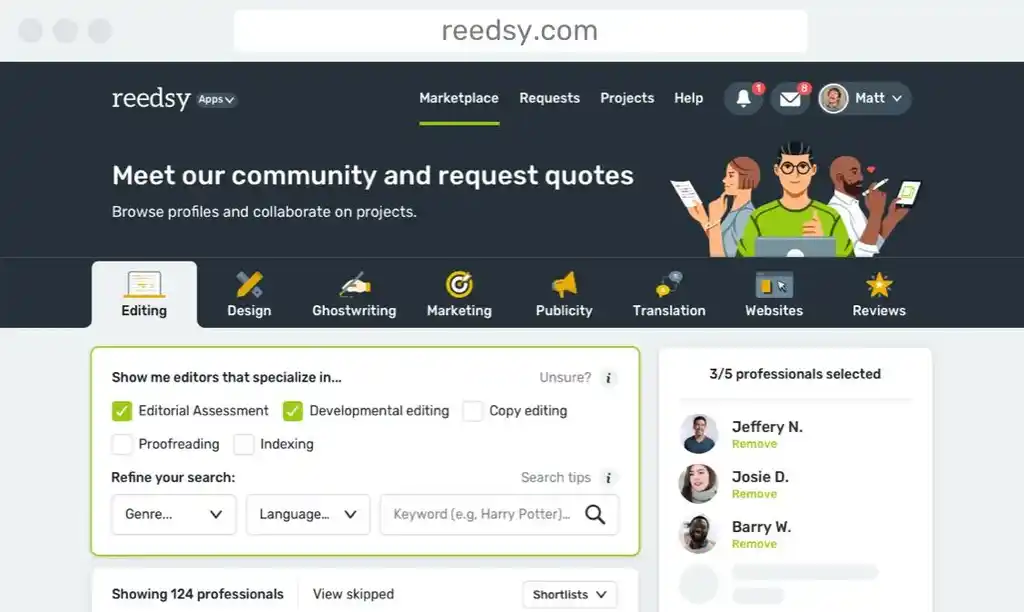
Very informative article!
Imad Ur Rahim - Almost 7 years ago
Thank you Imad! Thanks for reading.
Bridget At Now Novel - Almost 7 years ago
very helpful. thanks
Reufomere Doighati - Over 3 years ago
It's a pleasure, thank you for reading our blog!
Jordan - Over 3 years ago